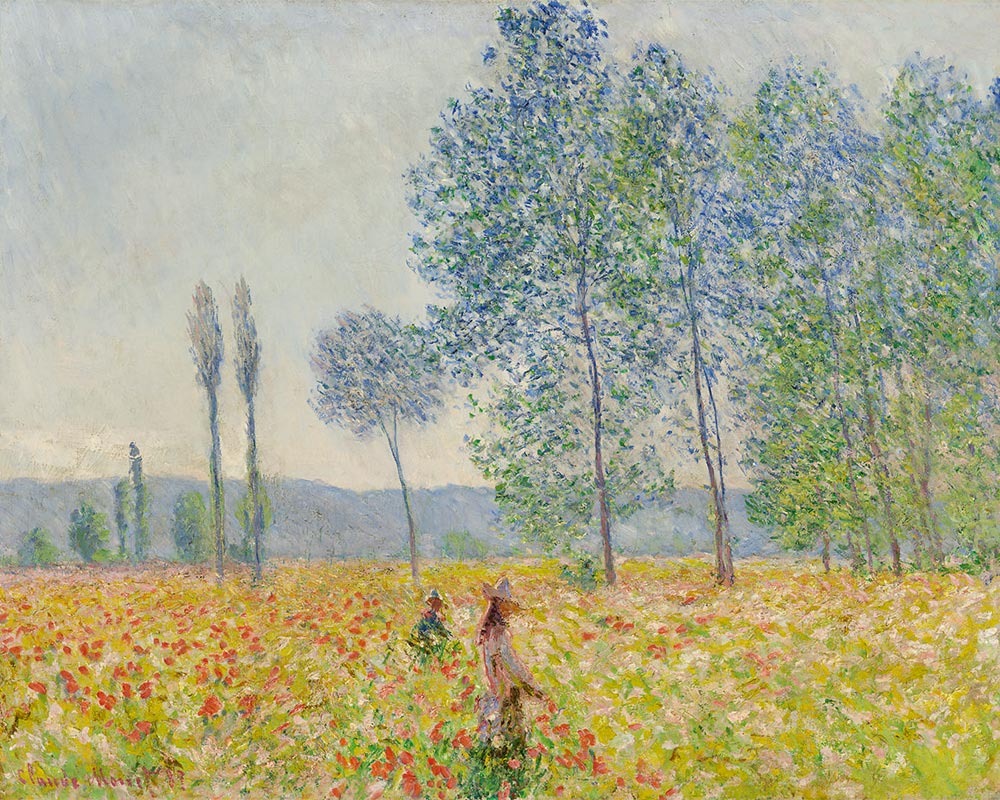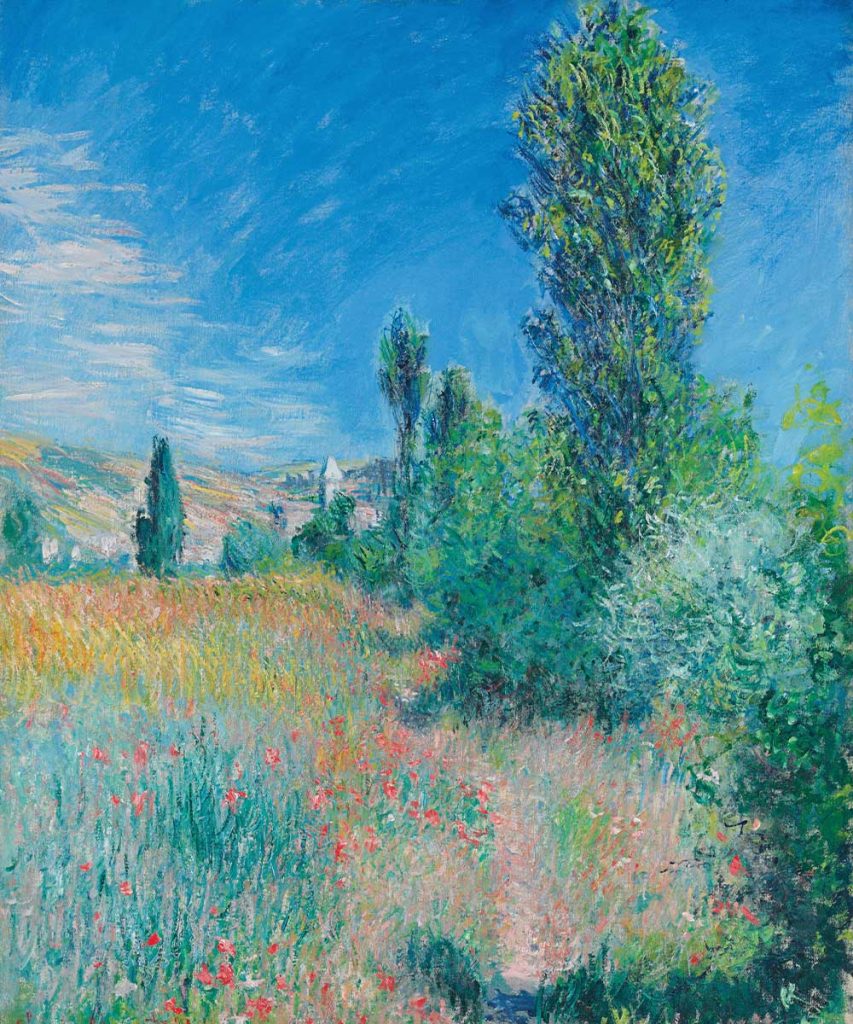In Constant Search
An exceptional show with more than 100 paintings by Claude Monet makes a visit to the Barberini Palace in Potsdam, Germany. Simply extraordinary.

Monet’s ‘Places’ – the simple title of the exhibition at the Museum Barberini, says it all. The presentation moves with Monet’s life stations. “Because you have to live in a place for quite a while in order to paint it, (…) but can one ever be satisfied compared to nature itself”, Claude Monet (1840 – 1926) said when he was 43. He had just been travelling to the south of France together with his colleague, Renoir. They took advantage of the new railway lines – a cheap and fast means of transport compared to the former horse carriages. On his own, Monet returned to Bordighera on the Mediterranean coast; in the exhibition, viewers can take in several views of the Italian town and the Côte d’Azur.
Twelve sections in the show recount the travels and stays of the French painter, with his own garden in Giverny as the culminating point. It begins in 1858, at the coast of Normandy and the in the Forrest of Fontainebleau near Paris. The fact that Monet painted nature, and did so outside, was innovative and anti-academic. He soon moved on to Paris and captured the new electric lights, urban architecture and fleeting encounters instead of posed portraits and historic scenes, constantly turning away from realistic painting. Having explored the buzzing city, Monet – now with a family – moved to Argenteuil, a popular suburb at the river Seine. He lived there for seven years and studied the ships and the water in summer and winter. This way he continuously developed Impressionism. The picture that gave the movement its name (Impression, sunrise, 1872, showing the harbour of Le Havre) is not on display though.

Monet flew the Franco-Prussian-War of 1870 and went to London, again an even bigger city with modern iron-cast bridges, reflections on the water of the river Thames and unusual colours in the haze and mist – the London fog. He was interested in the mingling tones and often painted from his hotel window: several pictures at a time, the easels next to each other, because his works were selling so fast. Waterloo Bridge and the Parliament he portrayed at any time of the day, the start of his serial works. On the way back to France he stopped in Zaandam in The Netherlands, famous for its windmills. He enjoyed the “superb place for paining”, he told Camille Pissarro in a letter.
In his late thirties, shortly before he became a widower when his first wife Camille died of a failed abortion, Monet drew back to the rural idyll of the village Vétheuil. He began to shape and tend a house garden, the basic concept of what would later be the magnificent garden in Giverny. For 46 years, he lived in this Seine village and created the illustrious waterlily pond. Still, he kept on travelling, to the Riviera as previously mentioned, or to the Atlantic coast. In 1908, he spent a couple of weeks in Venice, which at first he found overwhelming and later could not stop painting. The light, the water and the colours kept him engaged, even back in his studio where he finished the pictures. And yes, viewers will find Monet’s garden with plenty of waterlilies and the iconic Japanese bridge at the end of the beautiful exhibition.
Monet. Places continues until 1 June, Rembrandt’s Orient is open from 27 June until 11 October, while Impressionism in Russia opens on 7 November 2020.
www.museum-barberini.com









